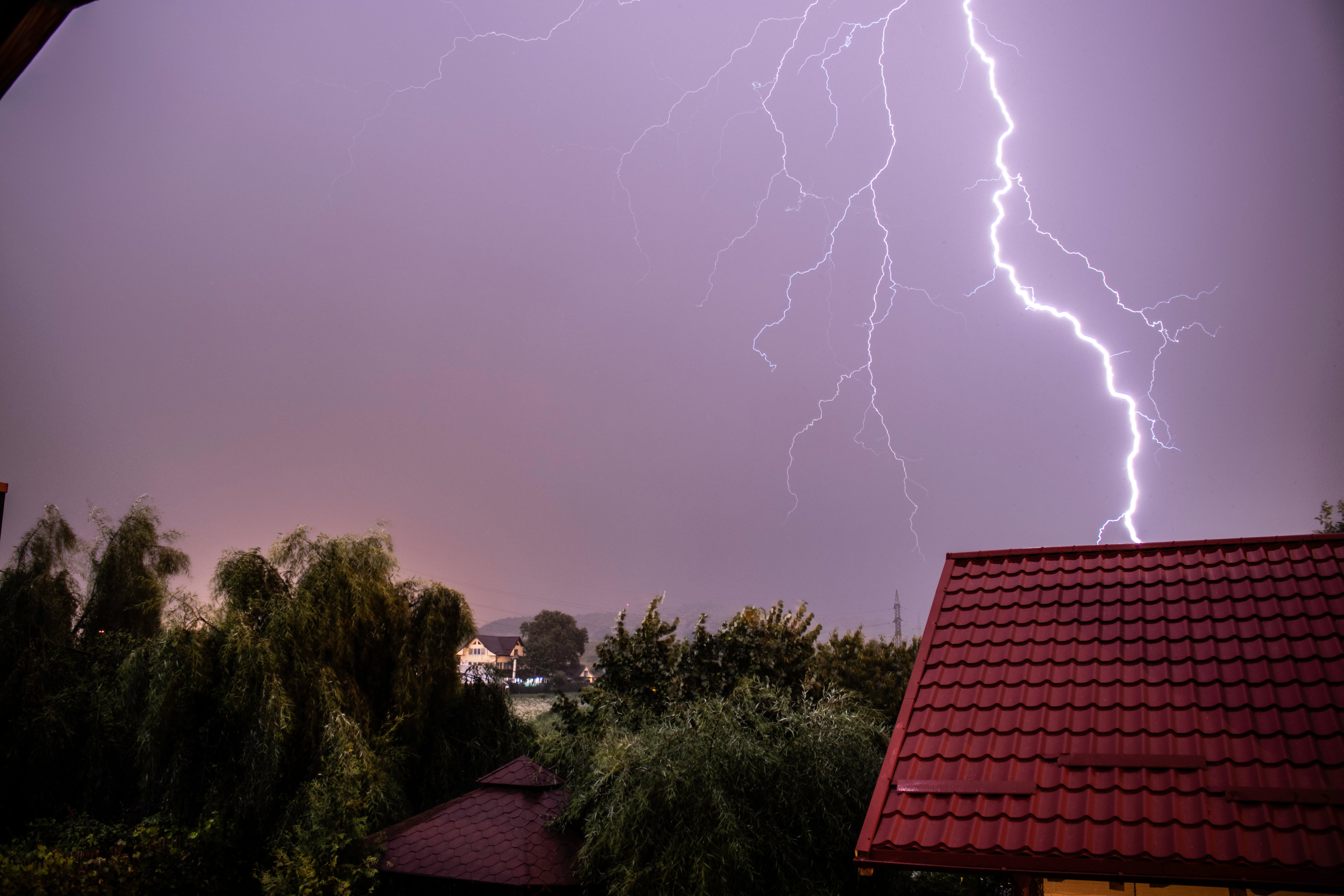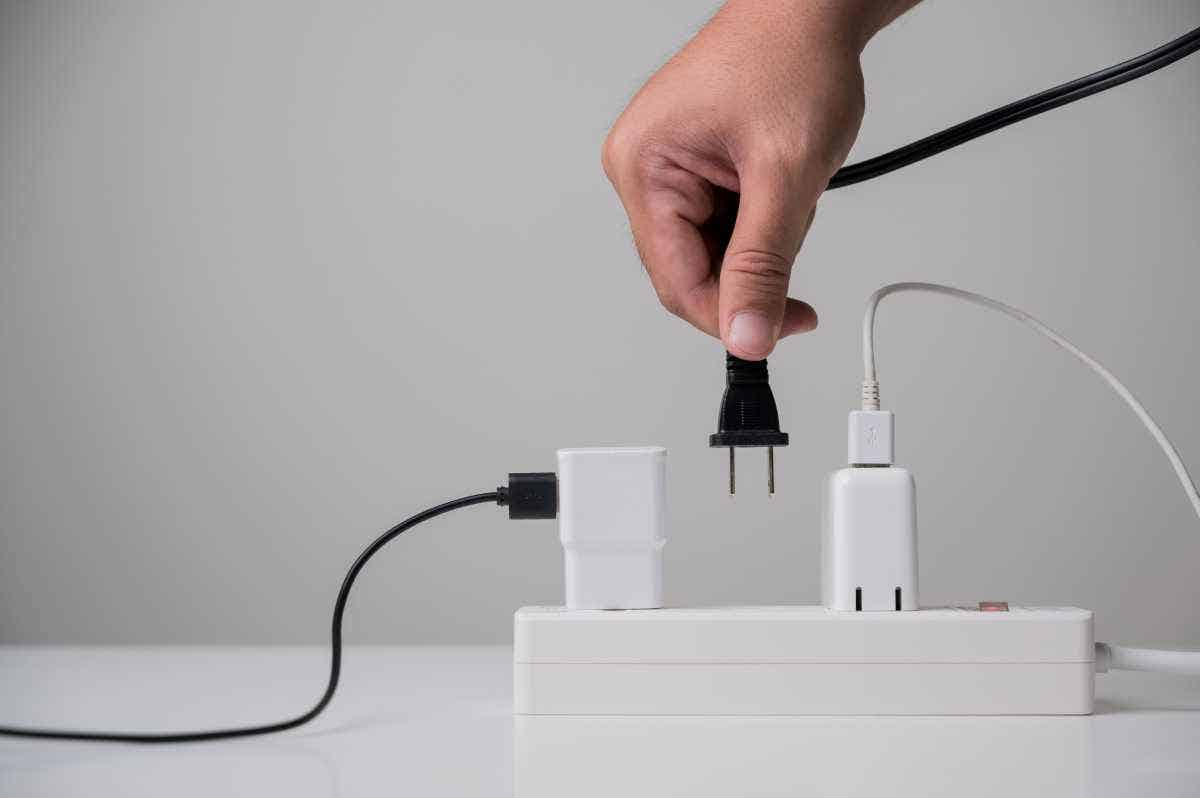We’ve all experienced a sudden flickering of the lights during a storm. While this may seem benign, there is an unseen threat happening: power surges. Your lights may come back on without a hitch, but that’s usually accompanied by a surge in energy that can damage your home electronics.
What causes power surges?

While lightning storms are the easiest culprit to pin a power surge on, surges can happen even when the weather is perfect. For example, electric companies can produce a power surge when they switch from running on one grid to another.
In other cases, homeowners may inadvertently cause power surges. While this is rare, it can happen if you misuse certain electrical devices or fail to maintain them properly. One common example occurs when a homeowner turns off a breaker without first unplugging an appliance. Turning the breaker back on can cause a power surge.
Another thing that can cause a power surge? Failing to maintain a household system like your HVAC. That can cause the system to try to draw too much power from your main panel.
This is why it’s important to always have electrical work performed by a licensed electrician and to properly maintain your household systems and appliances. Keeping these in good working order helps protect your home.
What damage can power surges cause?
Power surges can affect home appliances and electronics. As electricity surges over the acceptable voltage range, it causes an arc of current. This arc generates heat and causes the circuit boards and other electrical components to overheat, and that can lead to degradation and damage.
Often the damage caused by power surges is cumulative. This means that your television might work today but suddenly stop tomorrow if your home is experiencing a lot of electrical surges. But massive surges like those caused by lightning strikes can fry a system immediately.
You should note, too, that anything with a microprocessor is particularly vulnerable to power surges. Microprocessors aren’t just found in your computers and microwaves, either. Your dishwasher, refrigerator, and other appliances may all have microprocessors that make them susceptible to damage from power surges.
How to prevent power surges
There are a couple of common ways to keep power surges from affecting your appliances and electronics. The simplest is to unplug items if your power goes out. Unplugging everything that runs on electricity prevents a huge current from flowing into these items when the power turns back on. Most experts recommend just leaving one lamp plugged in so you know when the power returns. Once it’s back on, you can plug your electronics back in one by one.
Other ways to protect your home from power surges involve additional equipment, such as:
-
Point-of-use surge protectors. Point-of-use surge protectors look like power strips that you plug into a wall outlet. You then plug your appliance or electronic device into the point-of-use unit. Not all power strips are surge protectors so make sure you find the right type.
-
Special electrical outlets. These are designed to cut power to the unit if there is a surge and are commonly used in areas where power strips are not convenient but there is a need to manage the voltage used when appliances are plugged in. For example, you might want one for the microwave in your kitchen.
-
A service entrance device. This is a type of surge protector that mounts to your electrical panel or meter and protects all the devices plugged into outlets throughout your home. Service entrance devices are installed by electricians and may require a permit for installation depending on your city codes.
Preventing claims is probably one of the most important things you can do as a homeowner. Doing so not only makes your home safer, but it can also help you lower your home insurance premiums.
Does homeowners insurance cover power surges?
If a power surge does damage your appliances or electronics, you may be covered for the loss through your homeowners insurance. Most home insurance policies have some coverage for sudden, accidental damage from man-made electricity and direct lightning strikes. However, claims for damage that happens to electronics and appliances over time are usually excluded. In some cases, tubes, transistors, and other components aren’t covered either.
Talk to your agent or read through your policy to see what exactly is covered. Keep in mind that your coverage has a deductible, so it may not be worth making a claim for minor issues.


